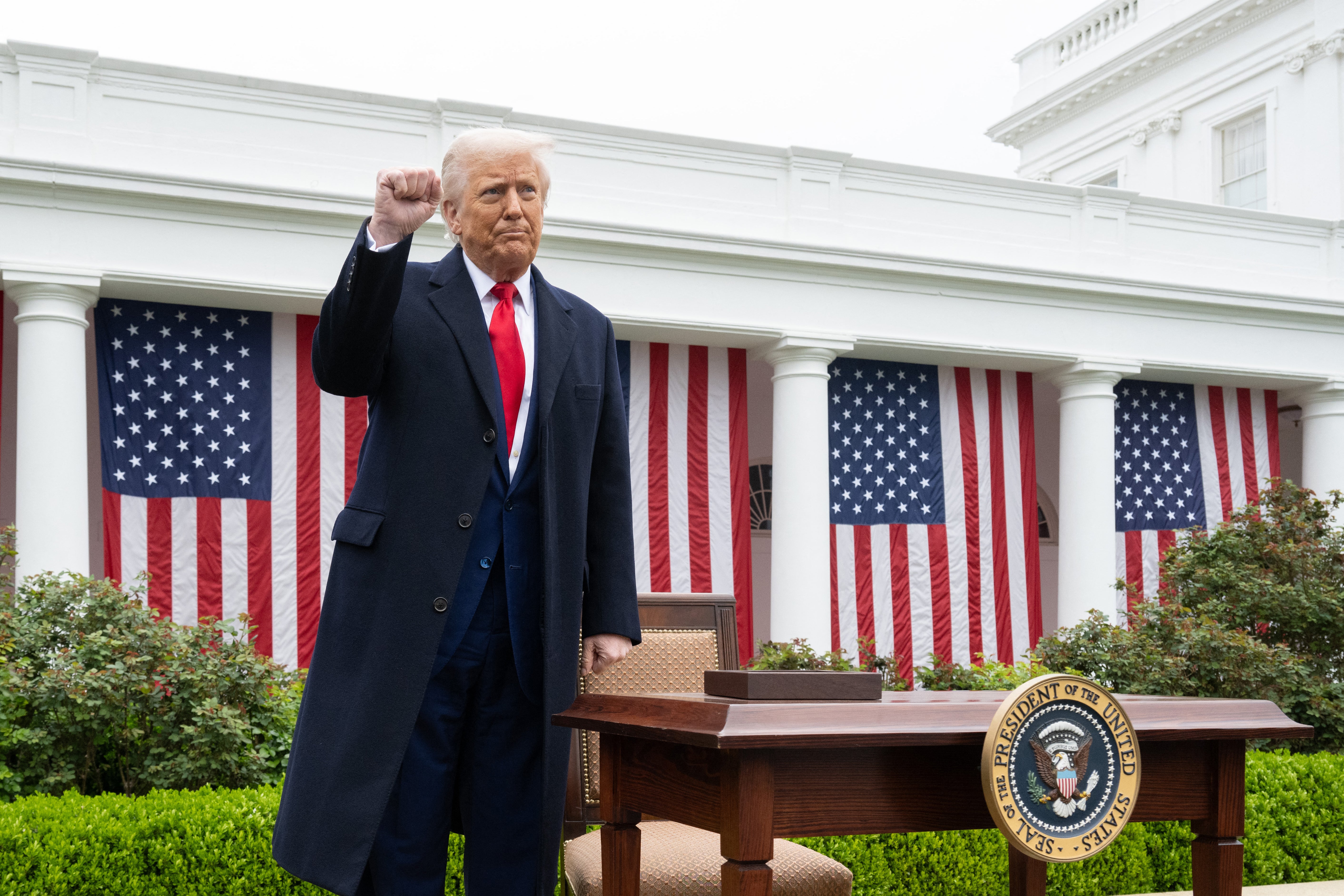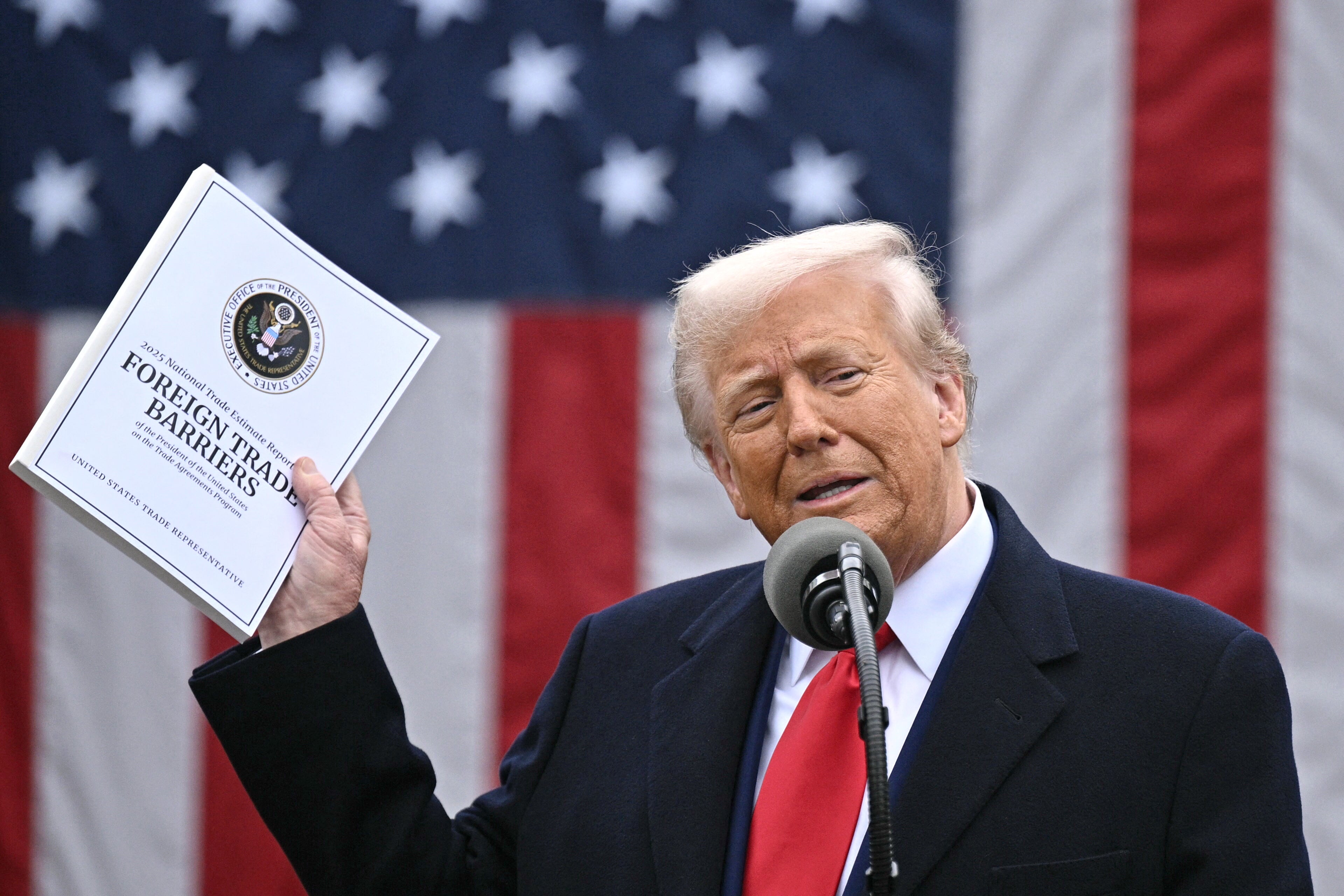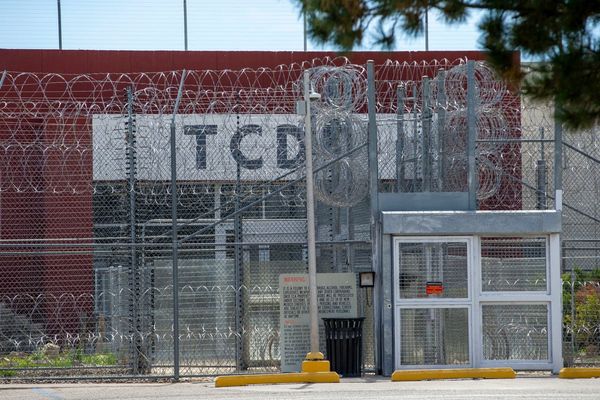After months of back-and-forth surrounding President Donald Trump’s tariffs, a U.S. trade court ruled Wednesday that he “exceeded his authority” in imposing sweeping levies on goods imported from around the world.
The three-judge panel of the U.S. Court of International Trade struck down steep tariffs Trump implemented against dozens of nations last month. It also nulled those imposed on Mexican, Canadian and Chinese imports, which the president has claimed would reduce fentanyl and drug trafficking from those countries.
Trump has argued that tariffs will help grow the economy, encourage consumers to buy more American goods, bring more jobs into the U.S. and stop other countries from taking advantage of America. He also argued his “Liberation Day” tariffs, which were implemented under an “emergency powers law,” were allowed because the country’s trade deficits amount to a national emergency.
Critics, however, argue that they have, by and large, spun the global economy into chaos and stoked fears of inflation.
While the ruling scraps most of Trump’s tariffs, it allows levies on some imports that will affect all Americans to remain in effect. The White House immediately said it would fight the decision.
Here’s what to know about the ruling and the future of how it might impact the prices of everyday goods:

What was Liberation Day?
Trump unleashed a flurry of import tariffs on all trade with the country on April 2, which he dubbed “Liberation Day.”
All nations were struck by the sweeping measures, which saw the U.K. hit by a 10 percent tariff on all exports to the U.S. Meanwhile, Trump declared America “will no longer be ripped off” by other countries taking advantage.
While Trump announced certain percentage levies against nearly all U.S. trading partners, he soon after reversed course, allowing for a 90-day window for every country except China to negotiate new terms. The new deadline was set to expire July 9.
What did the trade court rule?
The U.S. Court of International Trade ruled that Trump “exceeded his authority” with his hefty “Liberation Day” tariffs.
The court said that the International Emergency Economic Powers Act, a 1977 law Trump invoked to implement the tariffs, does not give him the authority to implement such levies. It also blocked a separate set of levies imposed on China, Mexico and Canada that Trump said would stop the flow of fentanyl and other drugs into the country.
The ruling, a result of two separate cases challenging Trump’s “Liberation Day” tariffs, is set to impact many, but not all, of the tariffs Trump has imposed during his second term.

What was Trump’s response?
The Trump administration vowed to go to the Supreme Court if necessary to appeal the ruling.
Trump’s deputy chief of staff Stephen Miller accused the court of a “judicial coup”, while White House spokesman Kush Desai slammed the decision, saying it was not for “unelected judges to decide how to properly address a national emergency.”
The Justice Department has also asked the court to put a pause on its ruling, arguing that it is “critical for the country’s national security and the president’s conduct of ongoing delicate diplomatic efforts.”
If the judges decline to pause their ruling, the Trump Administration will go to the federal appeals court, and then the Supreme Court.
What is now tariff-free?
The ruling blocks the tariffs Trump implemented on “Liberation Day” on nearly all U.S. trading partners, as well as levies he imposed earlier this year on China, Mexico and Canada.
The “liberation Day” tariffs impacted nearly every country globally, imposing a 10 percent tax on imports. Trump warned they would eventually rise to higher rates for some countries, but those reciprocal tariffs were later delayed until July 9.
The court also stopped 25 percent tariffs that Trump implemented against Canada and Mexico over illegal immigration and drug trafficking, and 20 percent on most Chinese goods over the country’s alleged role in producing fentanyl, The Washington Post reported.

So does that mean the price of toys will drop?
After Trump suggested American children should settle for fewer dolls as a result of his tariffs, many questioned how much the price of toys would skyrocket.
“Well, maybe the children will have two dolls instead of 30 dolls,” Trump said this month. He also suggested those two dolls could “cost a couple of bucks more than they would normally.”
Then, he threatened to impose 100 percent tariffs on toy maker Mattel after the company said it would diversify its production to other countries — outside the United States. Mattel, the creator of Barbie, Hot Wheels, Uno, American Girl and others, produces most of its toys overseas in places such as China and India.
Before the ruling, both China and India were set to be subject to increased tariffs. Given the expected tariffs, companies such as Mattel warned their prices would likely increase, however, given the ruling it remains to be seen if those increases will remain.
What about gas prices?
Oil prices fell Thursday after rising following the ruling about Trump’s tariffs.
The ruling steadied risk appetite across global markets, which had been on edge over the ever-changing levies.
Brent crude futures dropped 60 cents, or 0.9 percent, to $64.30 a barrel at midday trading, while U.S. West Texas Intermediate crude fell 67 cents, or 1.1 percent, to $61.17 a barrel. If oil prices go down, it usually leads to lower prices of gasoline at the pump.
What will still face tariffs?
Trump’s tariffs on specific products, like steel, aluminum and automobiles, are not affected by the ruling, The Washington Post reported. Unlike other tariffs, Trump did not use emergency powers to implement these levies, instead opting to use a 1962 trade law to put them into effect.
A 25 percent import tax on all steel and aluminum coming into the country, including products made from these metals, went into effect on March 12. The move delivered a major blow to America’s two North American neighbors, Canada and Mexico, which deliver most of the country’s steel imports.
Meanwhile, the Trump administration imposed 25 percent tariffs on imported automobiles in early April. A 25 percent tariff on cars could increase prices between $2,500 and $20,000 per vehicle, according to reports.
Some of those levies, however, were walked back to provide some relief to U.S. automakers after warnings from car manufacturers who threatened price increases.
How much has been generated so far from the tarrifs?
Trump’s tariffs have generated $67.9 billion as of May 27, about 78 percent more than the same time last year, according to Politico.
It was not immediately clear whether the total amount brought it would be enough to replace income tax as the main source of funding for the federal government, as the Trump Administration has argued it would. In 2024, federal income taxes brought in $2.4 trillion, according to the report.
What about inflation?
After months of worrying that Trump’s tariffs would drive up prices, inflation eased in April, according to the Associated Press.
Given Trump’s ever-changing tariffs, there has not been a huge shift in prices just yet, though major retailers like Walmart have warned tariffs would drive their prices up.
Now with the court striking down most tariffs, especially those against China, Canada and Mexico, there’s less of a risk of increased prices to everyday Americans.
With reporting from the Associated Press and Reuters.
Russia and Ukraine in spat over proposed June peace talks after Trump issues deadline
Appeals court revives Native American challenge to $10B SunZia energy transmission project
Trump’s tariffs are back on for now as he fights court ruling, appeals panel rules
Trump fights tariffs ruling as White House claims judges ‘brazenly abusing’ powers
Bongino cries to Fox about how much he hates his new FBI job: ‘I gave up everything!’
Social media howls over Kash Patel’s way-too-big chair in interview







